AUKUS alliance: The biggest strategy shift of our lifetime
In the wake of the AUKUS alliance, two things are now clear: Scott Morrison has changed Australia’s future, and China has changed the world in ways it did not envisage.
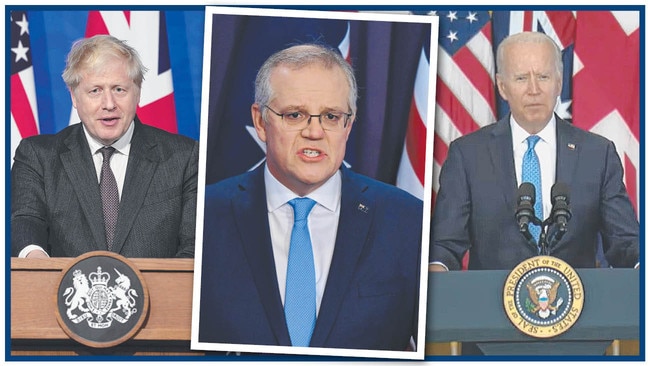
The feature of this transformation is not just that it has been implemented so quickly by Morrison, as a Howard successor, but that the Labor Party has signed up in-principle, pledging an Anthony Albanese government will back nuclear-powered submarines – a once inconceivable idea.
It is an astonishing outcome: Coalition-Labor bipartisanship on a deeper defence partnership with the US and the UK leading to a nuclear-powered submarine fleet. This change in national direction has the potential to endure for decades. It is likely to be seen as another milepost, 70 years after the ANZUS Treaty.
It testifies, above all, to how China has changed the world in ways it did not envisage. Things once near impossible are suddenly happening – witness this week’s three-way leadership event to inaugurate the AUKUS partnership featuring Joe Biden, Boris Johnson and Morrison.
Previous norms are being smashed. Would anybody a year ago have imagined the Biden-Johnson-Morrison event? Would anybody have imagined a bipartisan Australian commitment to nuclear-powered submarines?
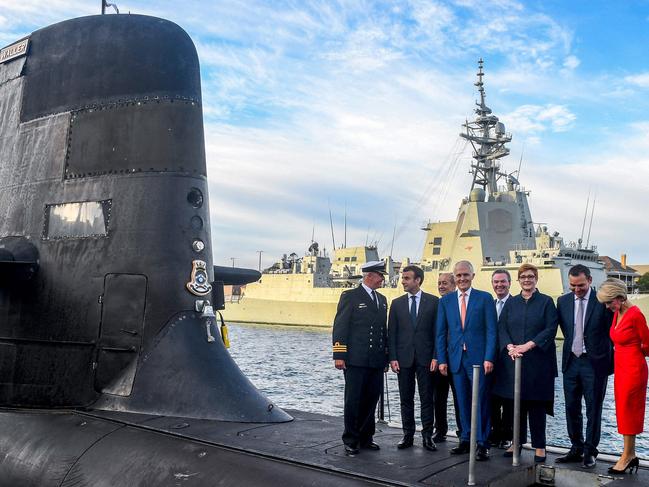
The US and Britain, surely for the first time in history, have become nuclear weapon states helping a non-nuclear power develop nuclear-powered submarines.
This trilateral partnership reflects a neat convergence of interests, at least for the time being. It shows Biden is serious about backing US allies, genuine about committing to the Indo-Pacific and is prepared to break new ground in challenging China. Post-Afghanistan, this helps Biden.
Biden showed something else. He did not allow Australia-US differences over climate change to inhibit him from striking this historic defence agreement with Australia. In talks with Morrison, he keeps the two issues separate. That’s smart. It’s how grown-ups do business. And it means the Biden administration will have no trouble in putting Morrison under climate change pressure.
The irony is that Morrison put the defence proposal to Biden at the three-way Biden-Johnson-Morrison UK meeting in June at the G7 summit, an event widely seen by the Australian media as a failure for Morrison to get a bilateral with the President when, in fact, Morrison was securing a remarkable diplomatic triumph.
Biden said he would consider the proposal, and the US gave the green light a week ago.
For Morrison, there are three big outcomes: our ANZUS alliance becomes stronger; Australia wins privileged access to US defence technology, digital and advanced warfare capability; and Australia has won a pathway to a fleet of nuclear-powered submarines, joining a select group of only six or seven nations.
These are decisive gains in a world where future conflict will be heavily hi-tech.
Does this tie Australia even closer to the US in possible future wars? Yes, of course. But Australia – as a 70-year-old alliance partner that has housed joint facilities that were nuclear targets and with a proven record of conflict participation with the US – has been closely aligned with America’s outlook for decades.
The AUKUS partnership, like the Quad leaders’ summit, owes its existence to China. It was fatuous to think an Australian prime minister would sit immobilised and not have a decisive response to Beijing’s military escalation, foreign interference and economic coercion designed to break Australia’s will and force its policy concessions. That is not the Australian character, as Morrison has shown.
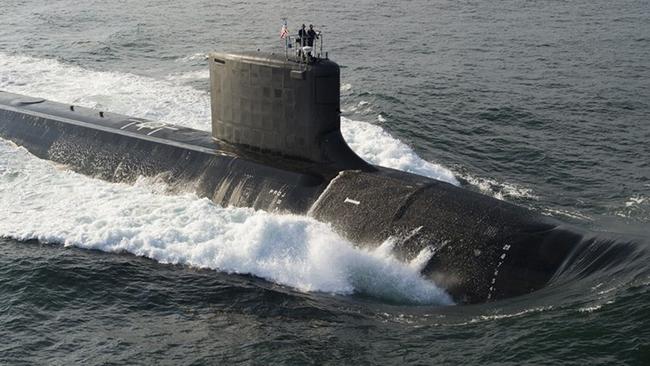
The siren warning about Australia’s transformed outlook came in Morrison’s July 2020 speech launching the Defence Strategic Update: “We have been a favoured isle with many natural advantages for many decades, but we have not seen the conflation of global, economic and strategic uncertainty now being experienced here in Australia in our region since the existential threat we faced when the global and regional order collapsed in the 1930s and 1940s.
“Now we must face that reality, understanding that we have moved into a new and less benign strategic area, one in which the institutions and patterns of co-operation that have benefited our prosperity and security for decades are now under increasing – and, I would suggest, almost irreversible – strain.”
Morrison has been acting on this premise since 2019. Dismissed and misinterpreted as a marketing man devoid of policy convictions, he has been systematically refashioning our strategic policy from the Pacific Update, to Covid diplomacy, to working with Japan and India to advance the Quad, and now to seeking a deeper alliance with the US and exploiting opportunities arising from Johnson’s post-Brexit plans for Britain.
The assumption Morrison made is that the Indo-Pacific will become “the global contest of the age” where the risk of conflict is “heightened” in a region defined by economic dynamism, military modernisation and coercive tactics. The two principles guiding Morrison’s outlook are the need for strong co-operation, collaboration and shared purpose among Indo-Pacific nations and a balance of power to restrain China, with the US the only nation able to lead that project.
If the US is not willing, then China will achieve regional primacy untrammelled.
The former director-general of the Office of National Assessments, main author of the 2017 Foreign Policy White Paper and now with the Asia Society, Richard Maude, calls AUKUS “a watershed moment in Australia’s long adjustment to an Indo-Pacific region being transformed by China’s power and assertiveness”.
Maude said: “It is difficult to overstate its significance or its potential future consequences – for the Australian Defence Force, for the nation’s industrial base, for our alliance with the US, and for our position in the region.”
Nobody can be sure of the full consequences. They will unfold over years and decades. You can guarantee a range of immediate “expert” speculations. But two core realities are important: Australia is teaming up with its established partners, the US and the UK, where there is a high level of trust; and, if Australia has long-run submarine force structure ambitions, then nuclear power is a logical aspiration.
One figure, above others, has stood against the tide. Paul Keating has not just attacked Morrison. His real accusation is of betrayal by the Labor Party – betrayal of its legacy, of Australian independence and of the Hawke-Keating engagement with the Asia tradition.
Keating makes two charges. First, the agreement constitutes a “dramatic loss of Australian sovereignty” because “it would rob Australia of freedom or choice” in a future conflict where the US goes to war. Second, that in a Western Pacific conflict, the US would have little chance against China, with its supply chains far too strained – that is, Australia is backing the wrong horse.
Keating has put a stake in the ground. This week’s epic decisions will reverberate.
Morrison rejects Keating’s arguments, but what of Albanese? How will he manage the debate when stalked by Keating?
There is, however, no gainsaying the sheer complexity of the submarine task. “I don’t think Morrison understands the enormous problems inherent in this commitment,” one insider said. “We have to start again but this time we are building a nuclear sub. We don’t have the expertise. It is a national project of technological complexity we have never faced.”
Is Australia’s ambition deliverable, or have we embarked on a misadventure? Defence analyst and submarine expert Marcus Hellyer from the Australian Strategic Policy Institute told Inquirer: “It’s huge, it’s really huge. I’m 55 and I’ve been following defence stuff most of my life and this is the biggest defence acquisition story of my lifetime.
“Nuclear powered submarines are a huge step forward in capability. It’s huge because of the broader industrial issues involved. And it’s huge for the alliance because we essentially are in a ‘forever’ relationship now, as the Prime Minister said.”
Hellyer said it was “also huge” because Australia had cancelled the $90bn deal with the French for 12 conventional powered subs as endorsed by the Turnbull government in 2016. “Normally when projects go bad, Defence and governments ride them to the bitter end until they are a true train wreck,” Hellyer said. “For once we’ve got out before things got really bad.
“The principal advantage of this decision is we get a far better undersea warfare capability, and that’s because a nuclear-powered submarine has to all intents and purposes unlimited energy. It can go much further and much faster and so it doesn’t have that vulnerability. You get more bang for the buck. You get more out of one nuclear boat than you get out of several conventional boats.”
But Hellyer said that while the new program was great for the long term, there was a “problem” in the short to medium term. This is the focus of agitation. The first of the new boats won’t enter the water until the end of the 2030s, and probably not till 2040. The fleet of eight won’t be complete until 2050. Yet Defence said in its 2020 Update that Australia’s 10-year threat warning time is evaporating. In the meantime, Australia must rely upon the fully revamped Collins-class conventional subs. Tony Abbott has called for urgency, saying we must get the first nuclear sub within a decade. Yet this seems impossible.
Morrison admits “we haven’t determined the specific vessel that we will be building”. There is an 18-month assessment being done within Defence to sort that out. It’s sure to be fraught. Is Australia looking at a new design? Or maybe getting a version of the British Astute-class with US warfare additions? Nobody knows. But the nuclear sub program will be more expensive, with a longer lead time, than the French program.
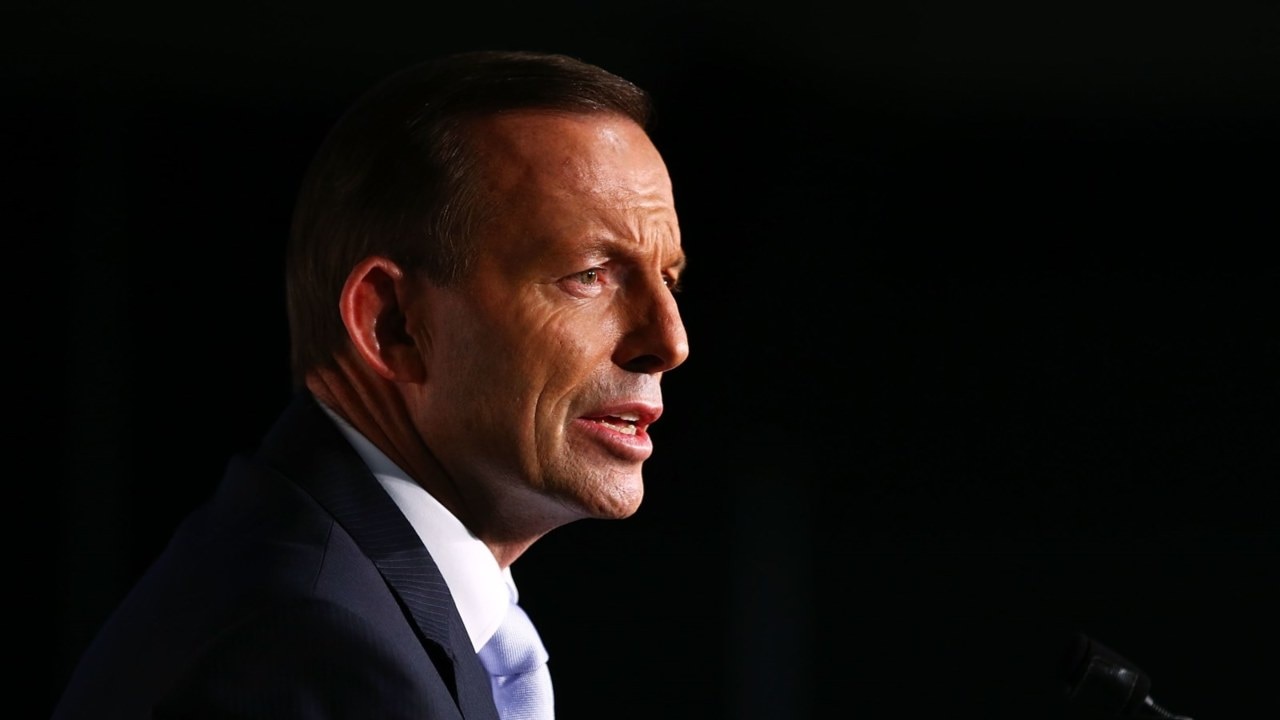
Labor is right to identify the Coalition’s post-2013 submarine management as a shambles. First it disappointed Japan; now it has dumped the French. Paris accuses Australia of betrayal. Morrison has tried to cushion the impact but it cannot be denied – this is an insult for President Emmanuel Macron, one of the world’s most influential leaders.
Morrison faces two urgent diplomatic tasks: repair of the vital Australia-France relationship, given France is a strong presence in our region, and the need for a special envoy to visit South East Asian capitals, particularly Indonesia, to provide sustained briefings of the political class on the motives driving AUKUS.
Morrison sees ASEAN as a priority, and it needs to be treated as a priority. His personal briefings to leaders is not enough.
Morrison’s deepening of the US alliance is not just about submarines. AUKUS, as the US side says, involves far wider security, defence industry, hi-tech, cyber and digital warfare issues. This is the across-the-board technological partnership Morrison wants. It will run, in parallel, with more US force presence in Australia – and, as Defence Minister Peter Dutton announced in Washington, greater air, naval and troop co-operation.
Nuclear-powered subs are a substantial and emotional event. Every sign suggests strong public support on national security grounds for Morrison’s initiative.
But Morrison, as usual, must beware the mad populist conservative lobby claiming this means Australia will develop a civil nuclear industry that can be harnessed to solve the climate-change issue.
The truth is, Morrison’s entire project rests upon advice that the submarine reactor lasts a lifetime and Australia doesn’t need a civil nuclear industry to sustain the boats.
There is no majority support in Australia for a nuclear industry, with the Labor Party ideologically opposed. Yet the populist right coalition fringe is desperate to push this agenda.
If this becomes the issue, Morrison loses in political terms.
Morrison is emphatic that he could only proceed with his plan because of technical advice that a nuclear industry was not required. Yet this is a fine line he is drawing. Labor’s support is subject to three conditions – no nuclear weapons, no civil nuclear industry and no breach of the Nuclear Non-Proliferation Treaty. Morrison meets them all. That delivers the political support to sustain the agreement.
Have no doubt about the stakes involved. Liberal and Labor are signing up Australia for a deeper alignment with the US in its competition with China. We get US technology, and we are expected to back that technology in any conflict where America is engaged.
Morrison understands and accepts this. He is driving this process. He sees these steps as fundamental to Australia’s security in a world of disruption.
Once again, China is the agent of change.


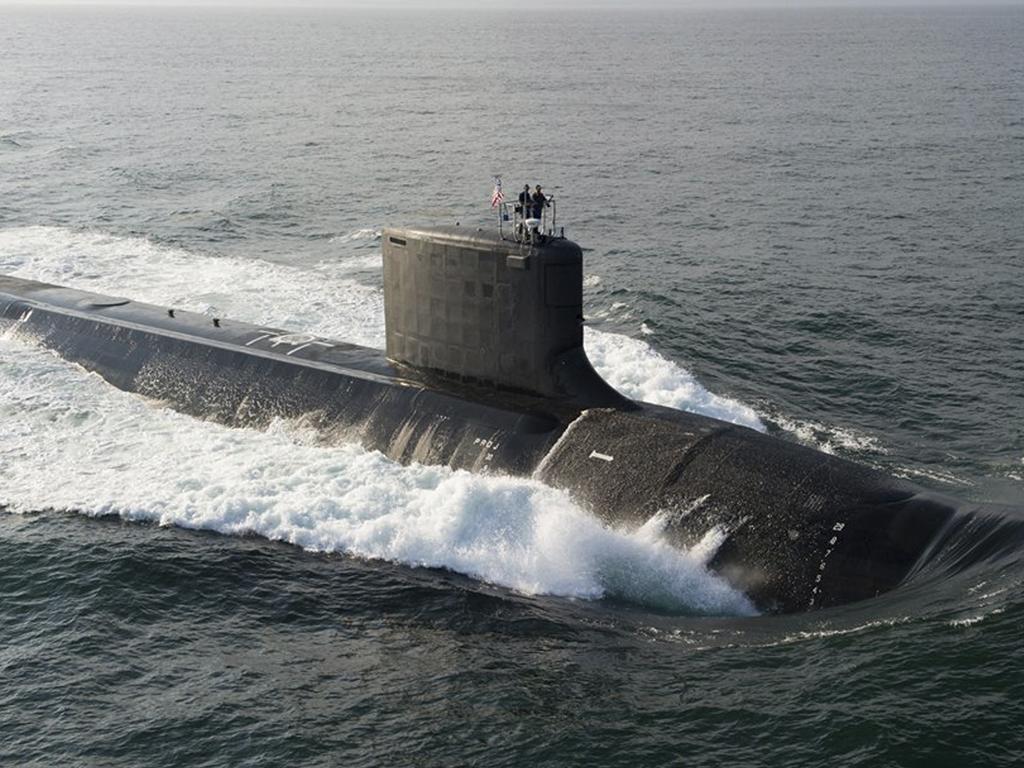
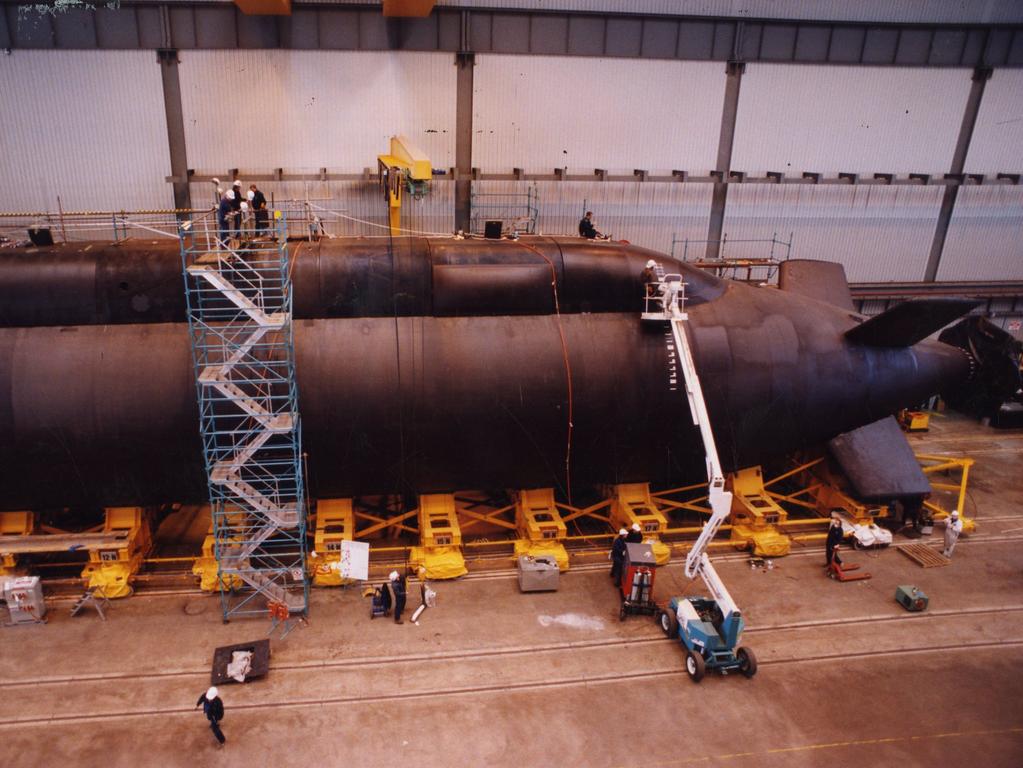
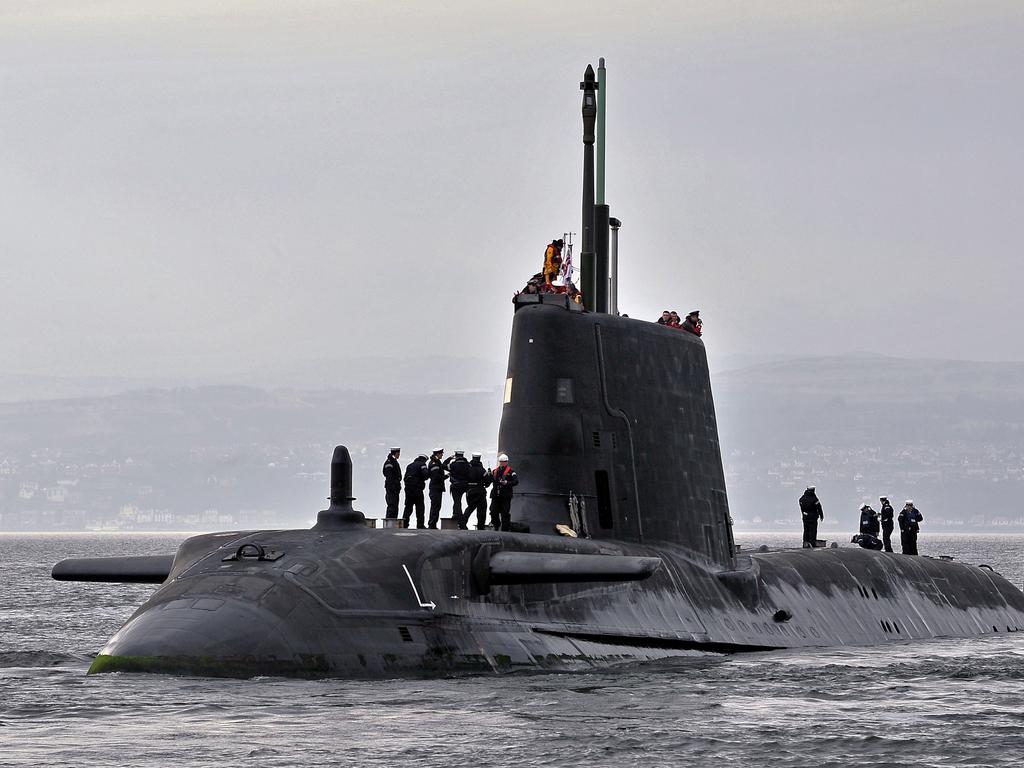
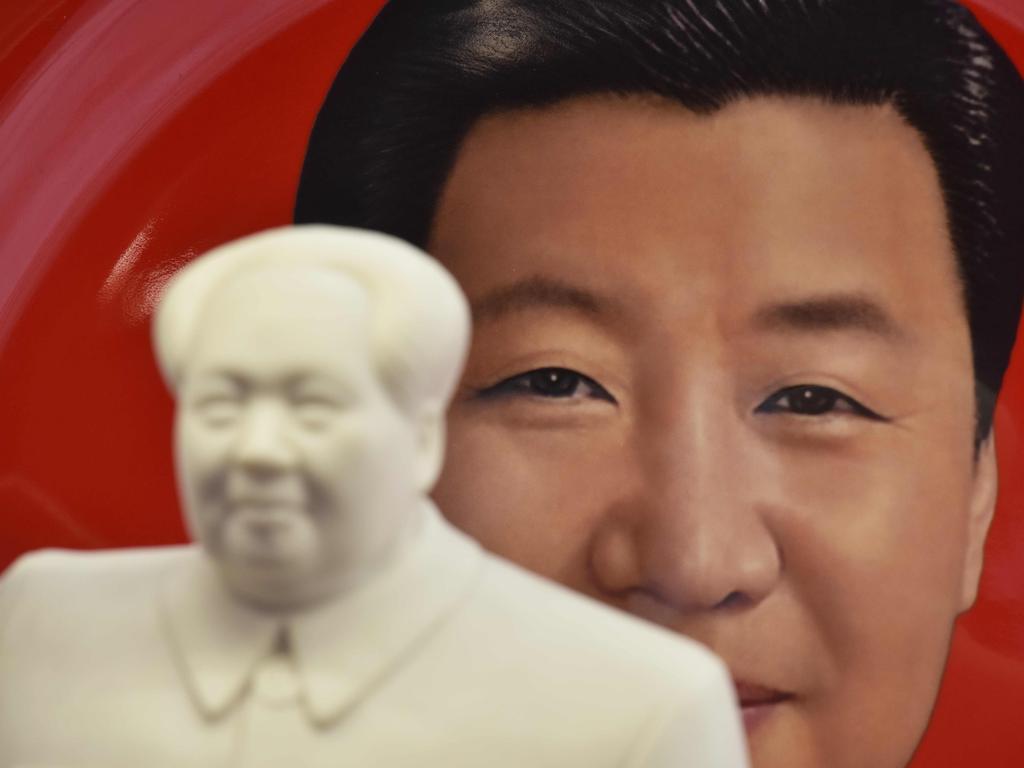
Australia has now completed the final chapter in its transition from John Howard’s doctrine of “not having to choose” between the US and China to Scott Morrison’s doctrine of a “forever” defence partnership with America and Britain to combat the rise of China.